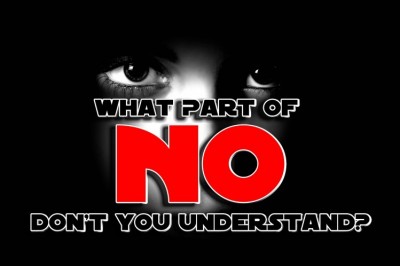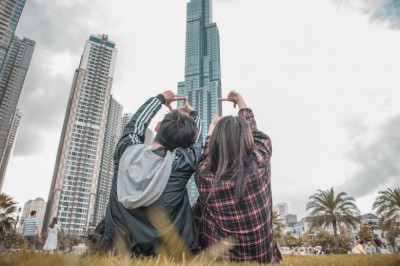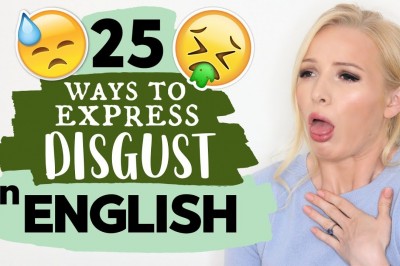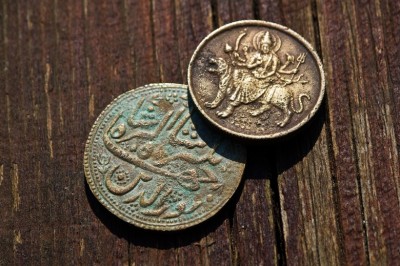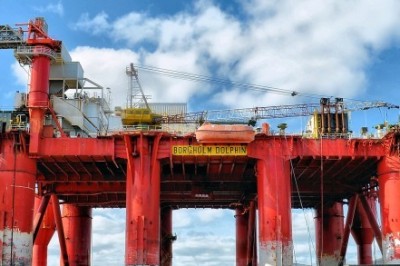
HUMAN RIGHTS AND PUBLIC INTEREST LITIGATION IN INDIA
HUMAN RIGHTS AND PUBLIC INTEREST LITIGATION IN INDIA
INTRODUCTION :
The origins of the concept of Human Rights can be find from the English, American and French revolutions of the 17th and 18th centuries. Centuries ago in England, the favourite Magna Carta (1215), the Petition of Rights (1688) and the U.S. Declaration of Independence (1776) followed by Bill of Rights (embodied in the U.S. constitution in 1791) that rules directed towards the protection of individual rights. Later, the French declaration of the Rights of Man and the Citizen (1789), there was in no part of the world till then any declaration of universal application.
It was on 26th June, 1945 at San Francisco, the representatives of the assembled nations met and adopted the United Nations Charter which interalia is a declaration of faith in fundamental Human Rights, in the dignity and worth of the human person, in the equal rights of men and women and of nations, large and small. On 24th October, 1945, the world at large witnessed the establishment of the United Nations Organisation which on 10th December, 1948 adopted the Universal Declaration of Human Rights. Soon after several international conventions, covenants and declarations have came into existence.
Human Rights as a concept emerged essentially in protecting individual rights from the States Authoritarianism. These were the Civil and Political Rights. However, in the course of its growth, Human Rights came to stand for economic, social and cultural rights also. Human Rights are the birth rights of people. A close look on Sec. 2(d) of Protection of Human Rights Act, 1993 defines that the rights relating to life, liberty, equality and dignity of the individual guaranteed by the constitution of embodied in the international covenants and enforceable by courts of India.
Human Rights represent claims which individuals or groups make on the society. They include the right to freedom from torture, the right to life inhuman treatment, freedom from slavery and forced labour, the right to liberty and security, freedom of movement and choice of residence, right to fair trail, right to privacy, freedom of thought, conscience and religion, freedom of opinion and expression. The right to marry and form family, the right to participate in ones Government either directly or indirectly or through freely elected representatives the right to nationality and equality before law.
WHAT ARE RIGHTS:
Rights are certain opportunities that are essential for the development of human dignity, facilities and personality. The Rights are categorised as political, civil, economic and cultural. These are rights to life, liberty, equality, employment, education, practise, and faith. Article 3 of the Universal Declaration of Human Rights categorically says that "Everyone has the right to life, liberty and security of person". European Convention on Human Rights, 1950 Article 2 provides that "Everyones right to life shall be protected by law". No one shall be deprived of his life intentionally save in the execution of a sentence of a court following his conviction of a crime for which this penalty is provided by law or simply by The Covenant on Civil and Political rights - Articele 9 (1) of the UN Covenant on Civil and Political Rights, 1966 says "Everyone has the right to liberty and security of person. No one shall be subjected to arbitrary arrest or detention. No one shall be deprived of his liberty except on such grounds and in accordance with such procedure as are established by law".
Section 2 (d) of The Protection of Human Rights Act, 1993 clearly says that "Human Rights" means the rights relating to life, liberty, equality and dignity of the individual guaranteed by the Constitution or embodied in the International Covenants and enforceable by Courts in India.
Some rights, particularly political and economic, are allowed to citizens only, the rest are for all to enjoy in a democracy. Rights enlarge the area of freedom of security from violence and discriminatory treatment and are expected to ensure general protection against all kinds of oppression.
HUMAN RIGHTS AND CONSTITUTION OF INDIA :
When we compare provisions of the constitution of India to that of Universal Declaration of Human Rights, we find many Articles have the same spirit to the point of being identical. Part - III of the Constitution of India deals with the Fundament Rights of the citizen. To enable the Supreme Court of India through judicial interpretation has widened the horizon of Human Rights. Mere declaration of Fundamental Rights is meaningless unless there is an effective machinery for enforcement of the rights. If there is no remedy there is no right. As such the makers of the Indian Constitution have provided a machinery and procedure under Article 32 and 226 of constitution for safeguarding the fundamental rights. It empowered the Supreme Court and all High Courts of India to issue Writs in the nature of Habeas Corpus, Mandamus, Prohibition, Quo-Warranto and Certiorari. Article 32(1) guarantees the right to move the Supreme Court by appropriate proceedings for the enforcement of Fundamental Rights conferred by Part III of the Constitution. Clause 2 of Article 32 confers powers on the Supreme Court to issue appropriate directions or orders or writs. Article 226 is substantially of the same effect as Article 32 (2).
A brief explanation of the meaning and purpose of each writ is given below to understand their significance.
(i) An aggrieved person can move the Supreme Court or High Court and request to issue an appropriate writ or direction. When a person is arrested or detained, he may, in a petition for Habeas Corpus, challenge the constitutionality of the law under which he has been arrested or detained on the ground of contravention of fundamental right of personal liberty (Article 21).
(ii) Where the executive seeks to enforce a law against an individual, say affecting his fundamental right, he may move for a writ of Mandamus to restrain the Government or other executive authority meant to discharge a public duty, from enforcing the law, upon finding that it is unconstitutional.
(iii) Where an inferior court or a quasi-judicial tribunal proceeds to act under a law which is alleged to be unconstitutional, the aggrieved party may apply for writ of Prohibition to prohibit the tribunal from proceeding further, or if the tribunal has already given its decision, the party may move for a writ of Certiorari to quash that decision. The writ of prohibition has much common with certiorari. Both the writs are issued with the object of restraining the inferior courts from exceeding their jurisdiction. The only difference is that the prohibition will stop the proceedings, while the writ of certiorari will be sought to quash the order of the lower court by the High Court or Supreme Court.
(iv) The word Quo warranto means, what is your authority. By this writ a holder of an office is called upon to show to the court under what authority he holds the office........, the object of the writ of Quo Waranto is to prevent a person to hold an office which he is no legally entitled.
The writ of Habeas Corpus and Mandamus are the effective instruments to prevent the abuse of power and protect the Human rights from violation. In case of the violation of Article 15(2), 17, 21 and 23 of the constitution, the writs can be issued against a private person in case of untouchability, social discrimination and employment of bonded labour. The aggrieved person can move the court on the above grounds in case of violation of his fundamental rights.
POWER UNDER ARTICLE 32:
The Constitution of India has given very important and also very wide powers to the Supreme Court of India under Article 32. This includes the Social Action Litigation or popularly called as the Public Interest Litigation. The right to constitutional remedies as provided by Article 32 is itself a Fundamental Right.
The Supreme Court is constituted the protector and guarantor of Fundamental Rights and it is the duty of the Supreme Court to grant relief under Article 32 where the existence of a Fundamental Rights and its breach, actual or threatened. An application under Article 32 cannot be thrown out simply because the proper direction or writ has not been prayed for, nothing debars the court from granting it in a different form.
Article 32 gives the court a very wide discretion in the matter of framing the writs to suit the exigencies of particular cases and the application of the petitioner cannot be thrown out simply on the ground that the proper writ has not been prayed for, as decided in Chiranjitlal Vs. Union of India, AIR 1951 SC 41.
The Supreme Court making an indefinite use of Public Interest Litigation was pleased to accept the letters sent by citizens as Writ Petitions and expanded the meaning of " life ". In Oleum Gas leak case a letter addressed to Supreme Court was entertained as Social Action Litigation to consider even claims for compensation arising from violations of Fundamental Rights, in M.C. Mehta Vs. Union of India AIR 1987 SC 1086.
In the case of Mohini Jain Vs. State of Karnataka, AIR 1992 SC 1858, while deciding the matter on capitation fee the court said that "the right to education flows directly from right to life". The right to life under Article 21 and the dignity of an individual cannot be assumed unless it is accompanied by the right to education. The right to education , therefore is concomitant to the fundamental right to the enshrined under a Constitutional mandate to provide educational institutions at all levels for the benefits of the citizens. capitation fee is nothing but a price for selling education. The concept of teaching shops is contrary to the constitutional scheme and is wholly adherent to the Indian culture and heritage. It further condemns the policy of admission on the basis of capitation fees. This commercialisation of medical education endangers the lowering of standards of medical education and encourages bad practice.
In the other case, the banning of injurious drugs in Vincent Panikurlangara Vs. Union of India, AIR 1987 SC 990 the Supreme Court observed that, as the issue being of national importance certain directions were given by the Supreme Court. In the ase of Bandhua Mukti Morcha Vs Vs. Union of India, AIR 1984 SC 802, the Honble Supreme Court has rightly said that the letters addressed to the court by person acting "Pro Pono Public" can be treated as writ petitions and the Bench is pleased to order certain directions to the concerned authorities. The Supreme Court further said that the aggrieved person suffering from poverty, disability or socially or economically disadvantage position, the writ petition by another person on his behalf is maintainable.
POWERS UNDER ARTICLE 226:
Article 226 subsequent to the forty third and forty fourth amendment now provides that every High Court shall have power throughout the territories in relation to which it exercise jurisdiction, to issue to any person, authority or Government, directions, orders or writs, where any Fundamental Right is infringed, an application under Article 226 should not thrown out simply on the ground that the proper writ has not been prayed for. The court should give suitable protection to Fundamental Rights. High Court is bound has much as the Supreme Court to enforce the Fundamental Rights as guaranteed under the constitution. The law declared by the High Court is binding on all subordinate courts within the State.
PUBLIC INTEREST LITIGATION:
Lexically the expression Public Interest Litigation means a legal action initiated in a Court of Law for the enforcement of public interest or general interest in which the public or a class of the community have pecuniary interest or some interest by which their legal rights or liabilities are affected. Amongst the new areas of legal development and in the process of social reform through law known as Public Interest Litigations or Social Action Litigations. This type of litigation is not limited to habeas corpus petitions but it has been spread in all directions where gross violation of rights occur. Under trail as well as convicted prisoners, women in protective custody, children in juvenile institutions, bonded and migrant labourers, untouchables and Scheduled Tribes, landless agricultural labourers who fall prey to faulty mechanism of administration, women who are bought and sold, slum-dwellers and payment-dwellers, kinds of victims of extra - judicial executions - all these and many more groups now flock to the Supreme Court and High Courts having jurisdiction seeking for justice. The features of public interest litigation are -
(a) Once the court is satisfied as to the public mischief to be remedied, it would not insist on the locus standi of the petitioners, who may not have any personal interest in the matter. Even a person who was benefited by the act of a Public body is entitled to urge that body was not lawfully constituted, say by reason of bias.
(b) In a Public Interest Litigation, the court has to strike a balance between two conflicting interests (i) Nobody should be allowed to indulge in wild and reckless allegations; and (ii) avoidance of public mischief and to prevent public to mischievous executive actions. Where public mischief is predominant, the court may not only restrain executive action, but may also give appropriate affirmative action.
(c) The court may direct inquiry, with out determining the respondents preliminary objection that no fundamental rights have been effected.
(d) The court may not be bound by the technicalities of an adversarial
procedure in such litigation.
(e) The Court may award costs to the petitioner even where the petition fails.
(f) A private litigant may abandon his claim. But in a public interest litigation, the court may refuse the petitioner to withdraw his petition where such withdrawal may be prejudicial to the public weal.
Public interest litigation is a proceeding in which an individual or group seeks relief in the interest of general public and not for its own purpose. The difference between public interest litigation and ordinary litigation is that ordinary litigation is essentially individualistic in character. In elaboration, the public interest litigation means, the persons concerned who move such writ application not for enforcing his personal right but filed by public spirited and individual espousing the cause of large number of people who are suffering under some legal wrong or injury and such person or determined class of person is by reason of poverty, helplessness or disability or socially or economically disadvantaged position, unable to approach the court for relief and in such case any member of the public can maintain writ petition.
The public interest litigation is more in the nature of collective litigation, dealing essentially in the enforcement of rights of a large number of disadvantaged and exploited persons in an area where it the responsibility of the State to end such exploitation. Public interest litigation is a cooperative effort on the part of the petitioner, the State and the courts to secure economic, social and cultural justice to the poor and the disadvantaged.
In 1978, when the Supreme Court took congnisance of the letters written by Charles Sobhraj and Sunil Batra from their prison complaining about the torture to which they and their fellow prisoners were subjected, the court treated the letters as writ petitions and proceeded to enquire into the conditions of the prisoners and adjudicate accordingly (AIR 1980 SC 1579). The court then started taking notice of articles published in newspapers drawing attention to the plight of undertrials languishing in prisons for years together. Under the public interest litigation the court has to register the letter or telegram as a memo of Writ Petition, but cannot withhold such letter from the record in order to ensure that the identity of such person shall not be disclosed. Thereafter notice is issued to the Opposite party for filing counter affidavit. The letter or petition must be addressed to the entire Court, the Chief Justice and his companion Judges, and not to any individual Judge. Even if the petitioner withdraws from the proceedings, the proceedings can continue.
In a memorable Judgment, Jolly George Vs. Bank of Cochin, AIR 1980 SC 470, Justice V.R. Krishna Iyer stated that it would be unjust to send a person to jail when he is unable to pay his debt due to extreme poverty and illness in the family. In the present case the judgment-debtor subsequent to the date of decree having no means to pay and in absence of malafides and dishonesty, the arrest and detention is violation of Article 11 of International Convention of Civil and Political Rights and Article 21 of the Constitution.
In the case of Bandhua Mukti Morcha Vs. Union of India, 1984 (3) SCC 161, a letter addressed to Justice Bhagwati relating the deplorable conditions of bonded labourers working at two stone quarries at Faridabad was admitted as a writ petition. The writ petition under Article 32 by public spirited organization on behalf of persons belonging to socially and economically weaker section complaining violation of their human rights on being forced to serve as bonded labourers, held, maintainable. Further said that, the State can be directed to ensure compliance of social welfare legislations. The Supreme Court while freeing the bonded labourers upheld the claim of the petitioners that stone quarries may come under the definition of mines under Mines Act and that all workers should be entitled to all benefits accruing there under and under various other beneficial legislations.
In the case of Neerja Chaudhury Vs. State of M.P., 1984 SCC (3) 243 a writ petition was filed by a journalist in the form of a letter to the Supreme Court complaining that about 135 bonded labourers within the meaning of Bonded Labour System (Abolition) Act 1976, working in the stone quarries of Faridabad had been released by the Supreme Courts order and had been brought back to M.P. with a promise of rehabilitation by the Chief Minister, but had not been rehabilitated even after six months of their release and were living in conditions of dire poverty. Giving suitable directions to the State of M.P. for proper implementation of the Bonded Labour Act, the Supreme Court observed, "it is the plainest requirement of Article 21 and 23 of the Constitution that bonded labourers must be identified and released and on release, they must be suitable rehabilitated". The court further said that "the Freedom from bondage without effective rehabilitation, would frustrate the entire purpose of the Act, in that event, the freed labourers will slide back into bondage again to keep body and soul together.
The Letter addressed by two citizens on the conditions in a mental Hospital at Kanaka near Ranchi in Rakesh Chandra Narayan Vs. State of Bihar, AIR 1989 SC 348 the Supreme Court ordered the state of Bihar to submit the report about the conditions prevailing in the mental hospital, would show the courts action on authorities who caused breach of public duty.
In Bhopal Gas Peedit Mahila Udyog Sangathan Vs. Union of India, AIR 1989 SC 1069, the apex court directed principal Secretary, Gas relief Department of Government of Madhya Pradesh to undertake implementation of scheme, will also an appreciation of social justice.
On pollution of river Ganga, the Supreme Court in M.C. Mehta Vs.Union of India, AIR 1988 SC 1115, issued directions to Kanpur Muncipal Corporation to control and prevent the pollution of water in the river Ganga at Kanpur. In this case the writ petitioner is not a riparian owner but he is interested in protecting lives of people using water of river Ganga. The Supreme Court has entertained the petition as public interest litigation. In order to control and provent the pollution of water in the river Ganga at Kanpur the Supreme Court issued certain directions for compliance by the Kanpur Municiapal Corporation and concerned authorities.
In another case, Tehri Bandh Vs. State of Utter Pradesh, (1991) 1 UJSC 121, the court decided that the court may investigate into the question whether, in constructing a dam, Government had taken into the consideration the effects of such construction upon the safety, environments etc., of the residents of locality, would clearly shows the interests of masses.
Public interest litigation is a weapon which has to be used with great care and circumspection and the judiciary has to be extremely careful to see that under the guise of redressing a public grievance it does not encroach upon the sphere reserved by the constitution to the executive and the legislature.
Only a person acting bonafide and having sufficient interest in the proceedings of public interest litigation will alone have the locus standi and can approach the court to wipe out the tears of the poor and the needy, suffering from the violation of fundamental rights, but not a person for the personal gain or private profit or political motive or any oblique consideration.
But, a new interpretation was given to the locus standi under which if the rights of an individual or a class of persons are violated and if by reasons of poverty or disability they cannot approach the court themselves, any public spirited individual, or institution, acting in good faith, and not out of vengeance, can move the court for judicial redress. The old doctrine of locus standi has been found to be inadequate to meet the needs of a developing society.
CONCLUSION:
The court decisions under Public Interest Litigation on the rights relating to life, free and fresh air, right of education etc., are indicative of the fact that our judiciary is alert and active to the rights of not only the present generation but to the future generations also. Denial of the basic rights will amounts to denial of right to live and move. It is perhaps the worst that can be gone to any generation. " No State or Society should do it. These are the basic elements which sustain life itself".
- K. V. Ramana Murthy, E-mail: ramanamurty9967@yahoo.co.in
BOOKS REFFERED:-
1. Hand book of International Humanitarian Law and Human Rights Law -
by Lt. Col. David L. Roberts, Dr. S. Subramanian.
2. The Protection of Human Rights Act, 1993.
3. Constitutional Remedies and writs - by Dr. Durga Das Basu
4. Indian Constitution - by M.P. Jain
5. The Constitution of India - by P.M. Bakshi
6. Our Judiciary - by Dr. B.R. Agarwala
7. Administrative Law - by Durga Das Basu
8. Public Interest Litigation - by P.D. Mathew, Seema Midha












